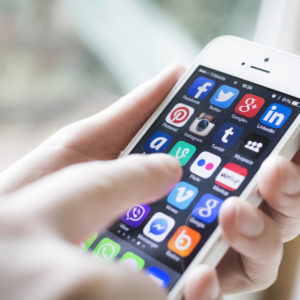In recent months, New Hampshire Gov. Kelly Ayotte pushed for a bell-to-bell all-day ban on smartphones in schools. Unfortunately, there is little evidence that such phone bans are effective, and some evidence suggests they may actually backfire, making things worse for kids. I’ve been researching this issue for over a decade, and we’re clearly in a new technology moral panic cycle. Lawmakers are trying to enact policies that have no scientific validity because people “feel” technology is bad.
As parents, it’s natural to worry about our kids’ mental health. And as human beings, we prefer to believe that some outside “evil” source is responsible for our kids’ bad outcomes, rather than ourselves. Unfortunately, that’s not what the data actually says. According to data from the CDC, aside from genetics, one of the most powerful sources of youth mental health problems is their own families. In the United States, youth suicide neatly tracks suicides among their parents’ generation, which is, in fact, much higher. For instance, an early 50s Caucasian man such as myself is three to four times more likely to commit suicide than a teen girl. Not surprisingly, suicides and other deaths of despair among parents predict youth suicides. Over the past decade, the number of youth who’ve lost parents to overdose deaths has exploded in frequency due to the opioid epidemic.
By contrast, time spent on social media or smartphones simply doesn’t predict youth mental health. Experimental studies find that reducing social media time does not improve mental health. This is the conclusion of most studies. Unfortunately, some studies find tiny correlations, which are likely statistical noise, and news media blow these out of proportion (these correlations are literally similar to the correlations between eating potatoes or wearing eyeglasses and suicide). News readers may think the evidence is better than it is (this also happened with video games, rock and roll, comic books, and the radio), particularly when news media is less likely to cover studies finding no effects.
But do school smartphone bans help? So far, the evidence is no. Repeated studies have failed to find that school smartphone bans improve student grades, mental health, or behavior.
But don’t teachers themselves often claim to see dramatic positive effects? Maybe…but there’s little reason to believe such claims are reliable. In several public records requests that I conducted, teachers’ claims conflicted with data from their own schools that showed studies outcomes got worse, not better, after smartphone bans.
In some cases, schools appear to be trying to fix something that isn’t even a problem. For instance, school administrators often claim smartphone bans will decrease bullying. But, according to the National Center for Education Statistics, students’ experience of bullying was already declining during the smartphone age, even if we include cyberbullying.
Likewise, according to CDC data, both youth suicides and mental health have improved in recent years without any of these policies.
The problem for schools is much more basic: they are a toxic mixture of boring and stressful. For decades, students have been trying to tell us they hate high school. Between 70-80 percent of high school students tell us they feel both bored and stressed at schools.
The problem with schools isn’t smartphones…it’s the schools themselves. This problem has likely worsened in the last two decades as multiple failed policies around standardized testing, Common Core, reduced recess, overly negative portrayals of the United States, trendy reading or social-emotional learning programs, etc., have been put in place. Human nature being what it is, schools would prefer to blame smartphones than do any introspection on how they could improve.
Unfortunately, according to news reports Gov. Ayotte’s policy is partially based on a pop scare-mongering book “The Anxious Generation” which does not accurately report either the full range of societal data on youth mental health nor research conclusions. This book has been criticized by scholars working in this area many times. To be clear, this book should never be used to support or form policy on any issue at any time, anywhere. It is not a book founded in good, objective science.
Focusing on the wrong policy comes with real costs. My public records requests revealed that schools were often enforcing their bans with harsh discipline, including the use of suspensions. Suspensions are well-known to be associated with negative outcomes for youth including dropouts and adult arrests. Although wanting students to remain focused on teachers is understandable, some schools have positively used smartphones in class for education purposes. Often, if you can’t beat them (and you can’t, students routinely subvert bans), join them. Beyond that, attention focused on the wrong issue inevitably distracts us from real solutions, in this case fostering real improvements in schools.
Gov. Ayotte’s policy is more likely to harm kids than help them. She should reconsider her efforts, lest she support yet another technology moral panic at the cost of kids’ welfare.





